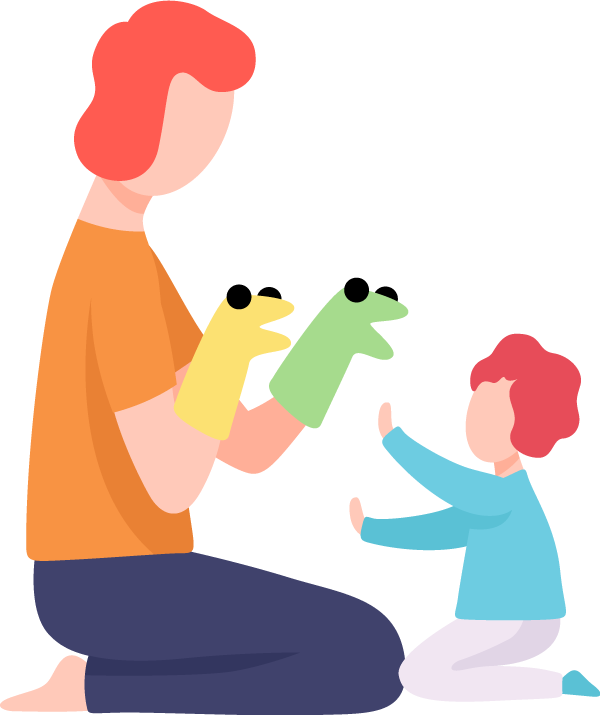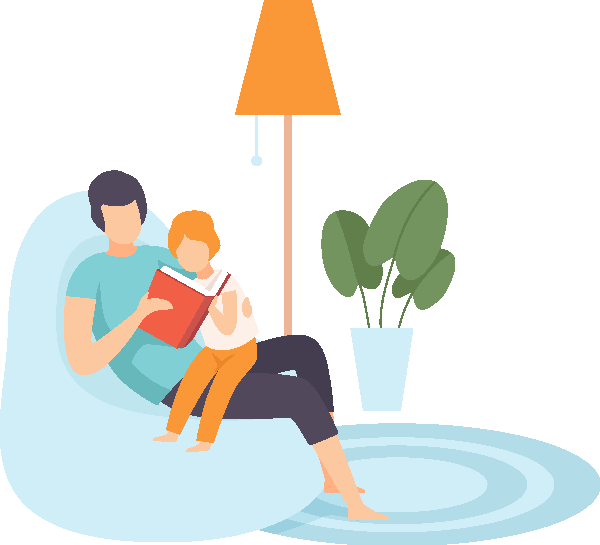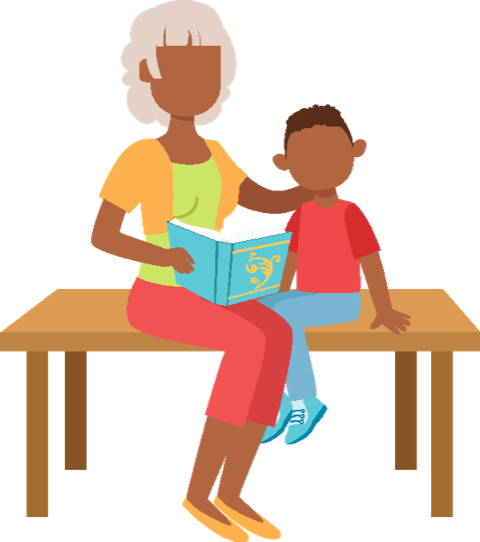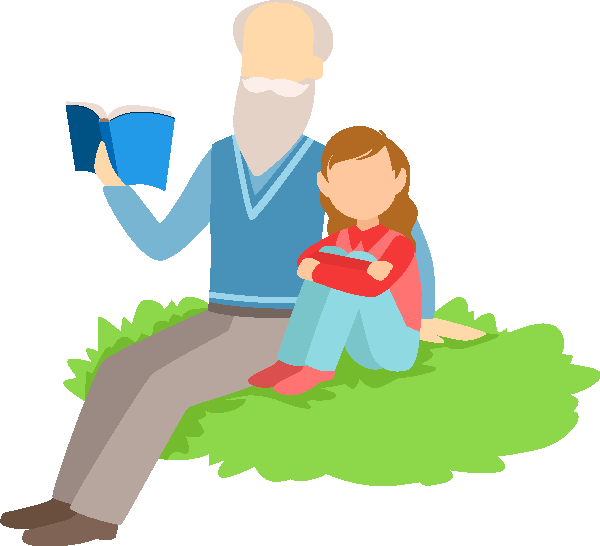-
About the RELs
+
-
For more than 50 years, the RELs have collaborated with school districts, state departments of education, and other education stakeholders to help them generate and use evidence and improve student outcomes. Read more
-
- Regions +
- Products
-
Topics
+
- Achievement Gap Career Readiness Charter Schools College Readiness COVID-19 Data Use Discipline Dropout Prevention
- Early Childhood Education English Language Learners Equity Literacy Mathematics Online Courses Postsecondary Education Principals
- Research Tools Rural Schools Social Emotional Learning Special Education Student Characteristics Teacher Effectiveness Teacher Persistence Teacher Recruitment
- Events
- Blog
- Connect with Us +
Home Resource Supporting Your Child's Reading at Home
Supporting Your Child's Reading at Home
First Grade: Recommendation 2: Linking Sounds to Letters
Help your child link sounds in speech to letters in print.
Sounds in Words: Onset-Rime

Although speaking and listening may not seem related to learning to read, being aware of sounds in words is very important to reading. This awareness allows children to break apart words orally and use sounds to learn to read and write words. Children first need to become aware of sounds in words without relating those sounds to print. They demonstrate their knowledge using their speaking and listening skills.
You can help your child develop an awareness of sounds in spoken words. Singing silly songs and making up silly words or poems are ways to enhance your child's awareness of sounds. These skills are fun to practice because most children love to play with sounds in words. You can make up silly sentences where most of the words begin with the same sound: Leo the lion liked to lick a lot of lollipops!
There are many types of different sounds in words. For example, you can separate a word into its onset and rime. The onset is the part of a word before the vowel. The rime is the part of a word including the vowel and the string of letters that follows. In the word sun, /s/ is the onset and /un/ is the rime. In the word ring, /r/ is the onset and /ing/ is the rime. In the word stop, /st/ is the onset and /op/ is the rime.
Onset and Rime Picture Cards
Key Points About the Video
- Mom has her daughter review the names of the pictures before beginning the activity to make sure she knows the name of each picture.
- Mom offers positive encouragement throughout the activity (e.g. Good! You did that well! You said the onset and rime correctly! You got that, girl!).
Onset and Rime Picture Cards
Help your child take apart and put together the onset and rime of a spoken word.
Sounds in Words: Individual Sounds

Being able to separate and put together individual sounds in spoken words will help your child become a better reader and speller. If your child can hear the individual sounds in a word and put those sounds together, it will help him or her connect those sounds to letters when he or she reads and spells.
Say and Slide Individual Sounds in Words
Key Points About the Video
- Mom explains the activity and shows an example before she asks her daughter to try it.
- Mom is patient and shows her daughter how to do the task when she has a difficult time with the word paper.
- Mom tells her daughter that she worked hard and did a good job.
Say and Slide Individual Sounds in Words
Help your child separate and put together individual sounds of a spoken word.
Sounds in Words: First Sound, Middle Sound, Last Sound

Being able to separate and put together individual sounds in spoken words will help your child become a better reader and speller. If your child can hear the individual sounds in a word and put those sounds together, it will help him or her connect those sounds to letters when he or she reads and spells.
- The beginning sound of a word is the first sound you hear when you say the word. The first sound in soap is /s/.
- The middle sound of a word is the sound you hear in the middle when you say the word. The middle sound in soap is /o/.
- The ending sound of a word is the last sound you hear when you say the word. The last sound in soap is /p/.
First Sound? Middle Sound? Last Sound?
Key Points About the Video
- Mom asks her daughter to explain her answers.
- Mom has her daughter identify the sound that was the same in two words and tell whether it was the first, middle, or last sound in the words.
- Mom provides positive feedback throughout the activity.
First Sound? Middle Sound? Last Sound?
Help your child compare two spoken words, recognize their common sound, and identify the position of that common sound (first, middle, or last sound).
Letter Names and Letter Sounds

It is important for children to know letter names and letter sounds. Letter name knowledge is recognizing and naming letters. An example of recognizing letters is when you show a child the letters N, A, and S and ask which letter is S, the child points to the S. An example of naming letters is when a child looks at the letter M and orally names that letter.
Letter sound knowledge is demonstrated when a child can look at a letter in print and tell you the sound it represents. For example, if you point to the letter F and ask, "What sound does this letter make?" The child will say, "/f/."
The vowels are a, e, i, o, u. Each vowel has a short sound and a long sound. The short sound of each vowel is: a, /a /; e, /e/; i, /i/; o, /o/; u, /u/. The long sound of each vowel is when the vowel says its name, a, e, i, o, u. The other letters of the alphabet are called consonants. For example, B, C, and D are consonants.
Consonant and Short Vowel Sound Practice Using Junk Mail
Key Points About the Video
- Mom explains the activity and provides an example for her son by saying the letter name and the letter–sound.
- Mom and son laugh and have fun with the activity.
Consonant and Short Vowel Sound Practice
Help your child practice identifying the sound for specific letters.
Books to Share
Suggested books to practice letter names and letter sounds. As you share the book, periodically point to a letter and ask your child to say the letter name and the letter sound.
- LMNO Peas by Keith Baker
- Click, Clack, Quackity-Quack: An Alphabetic Adventure by Doreen Cronin
- Eating the Alphabet by Lois Ehlert
- Alphabeasties and Other Amazing Types by Sharon Werner
- I Stink! by Kate and Jim McMullen
Sounds With Two or More Letters

When children know a few letter sounds, they are encouraged to blend them together to read and spell words. For example, fl says /fl/ as in flag and st says /st/ as in stop. If your child knows that s says /s/ and t says /t/, then they blend, or put together, those two sounds, /st/.
flag
stop
Sometimes, there are two letters that make one sound. For example, ch says /ch/ as in cheese and sh says /sh/ as in shop. Th has two different sounds. In the word that, th says /th/ where your vocal cords vibrate, and the sound is said out loud. In the word thin, th is whispered and your vocal cords do not vibrate.
cheese
shop
that
thin
Letter–Sound Practice and Building Words
Key Points About the Video
- Mom focuses on helping her son blend individual sounds together to spell and read the words.
- fl is a constant blend. It has two sounds, /f/ and /l/. This child knows each of these letter sounds, so is able to blend them together to spell the word flag.
- br is a constant blend. It has two sounds, /b/ and /r/. This child knows each of these letter sounds, so is able to blend them together to spell the word brag.
- Mom talked about the meanings of the words to help build vocabulary.
Letter–Sound Practice Building Words
Help your child practice changing the beginning sound or sounds of a word to build a new word.
Silent e Rule

An important step in learning to read is being able to connect how words are separated into individual sounds with knowledge of how letters relate to sounds. For example, when you are able to hear the individual sounds in the word sat, /s/ /a/ /t/ and know that s represents /s/, a represents /a/ and t represents /t/, you are linking letters to sounds. This is critical to understand and be able to do in the process of learning to read.
When we have a word like can and we add an e at the end, the word changes to cane. We call this the silent e rule. We do not say the sound of e; it is silent. The silent e also changes the vowel before it to a long vowel. A vowel is long when it says its letter name. Can has a short a, /a/. But when we add the silent e to the end, /a/ changes to /a/. Other examples include mad/made, rid/ride, hop/hope.
Spelling and Reading Words With Silent e
Key Points About the Video
- Mom offers positive encouragement (That's right! Excellent!).
- Mom has her son use words in a sentence to make sure he knows their meanings.
- Mom has her son read the list of words at the end of the activity for another opportunity to practice reading.
Building Words With Silent e
Help your child apply the silent e rule to writing and reading words.
Changing Letters in Words to Spell New Words

Word-changing activities can be used to help support your child's learning to read and spell. Word changing activities include using letters in which you know the sounds to build a word. Then, you change a letter or letters to change the word. Word changing can be fun for children and helps them become better spellers and readers.
Change a Letter, Change the Word
Key Points About the Video
- Caretaker is encouraging (Great! You got this!).
- Caretaker uses words in sentences and talks about the meanings of words.
- Caretaker is patient and breaks the task down into small steps (spell, write word, change letters, write new word).
Change a Letter, Change the Word
Help your child change a letter or letters in a given word to spell a new word.
Connect with REL Southeast